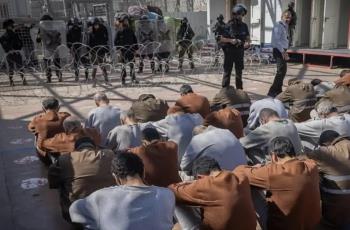Alwaght- These days, the Yemen battleground is experiencing deep changes and developments, with the most important of them is the United Arab Emirates’ push to bring under control some of the Yemeni islands in the Red Sea using the southern mercenary forces backed by Abu Dhabi. The efforts by the UAE have been a source of new clashes between the loyalists of resigned President Abdrabbuh Mansour Hadi and the separatist southerners.
After the clashes erupted between the Saudi and Emirati mercenary militias in the southern city of Lahij on Sunday night, the governor of Socotra Island accused the Southern Transition Council (STC), a separatist organization founded by the UAE in 2017, of destroying the government constitutions and setting up a military camp in the province. Meanwhile, as the Saudis who waged the war on Yemen in 2015 to bring back Hadi to rule remain silent and take no action in response to the developments that are moving against their proxy’s favor, the gaps are widening between Hadi and Riyadh.
From another aspect, reports have been saying that the Saudi forces and their proxies began to retreat from positions in Marib in the center of the country as the Yemeni army and the popular committees have made strong gains recently with their push against the invaders.
The recent victories by the Sana’a-based forces are not limited to the battleground. Ansarullah, a movement leading the Yemeni people’s revolution against Hadi and mainly against the foreign intervention represented by the Saudi meddling, has recently launched a new round of ballistic missile and drone strikes deep into Saudi Arabia as it continues to carry out deterrent operations against the aggression countries.
The new situation has caused a new atmosphere for political efforts to put an end to the five-year-old war. A suggestion made on Saturday by the UN to end the conflict is one initiative. Although the UN proposals for the cessation of fire are mainly made when the Saudi-led Arab coalition is under military pressure by the Yemenis and is retreating and thus the UN takes moves in favor of Riyadh interests, the recent proposal for a ceasefire has considered some of the Yemeni side’s demands.
Here are some of the terms of the UN proposal:
1. A comprehensive ceasefire across Yemen should be implemented after a peace document is signed between the warring sides.
2. Air, sea, and ground military operations should be halted.
3. A UN-supervised coordination committee, comprising high-ranking officers from both sides, should be formed with its duty being watching the ceasefire.
4. Economic and humanitarian aids need to be arranged to look into the cases of the prisoners, laws, ports, and interprovincial highways. More actions are the release of the prisoners based on the Stockholm peace process and opening the main roads of Taiz, Dhala, Sana’a, Marib, and Jawf provinces.
5. The capital Sana’a airport should be reopened, as the roadblocks ahead of the docking of the vessels carrying fuel and food to Yemen in Hudaydah port need to be removed.
The potentials and requirements of the UN proposal
The proposal made by the UN special representative to the Yemen war suggests that the international body has finally decided to consider some realities and demands like the need to stop the Saudi operations, mainly the airstrikes that have so far killed thousands, wounded more, and displaced millions, with the top victims being women and children. The Saudi operations remain the key obstacle ahead of the realization of peace in the war-weary country and a primary destroyer of ceasefire initiatives.
Reopening Sana’a airport and lifting the siege on Hudaydah port, the only lifeline amid the all-out blockade, are positive steps that in case of materialization can relatively alleviate the humanitarian crisis. These two measures have been the constant demands of the Sana’a negotiators.
Despite the progress that could be made through the implementation of the terms of the new initiative, the suggestion does never have a balance with the current conditions of war in Yemen. After all, the Saudi-headed coalition has reached an impasse on the ground as it is far away from the realization of the initial goals, while it is marred by internal division and even clashes between its main constituents. On the opposite side, the Sana’a forces day by day gain further control over the war developments and boost their combat capabilities both on the ground and in missile and drone terms, something giving Sana’a a determining power in the war.
While holding the upper hand, Sana’a could, naturally, expand its demands beyond the older ones. The most important point is the identification of the aggressor in the war. Over the past years, Yemen has been devastated by the coalition bombardment. The damage is both humanitarian and economic. The poverty-hit country cannot afford the heavy costs of rebuilding. So, the aggression countries should pay the costs.
From another aspect, the UN should consider as a top priority the unification of Yemen and its territorial integrity. The control of the Yemeni islands by the UAE-supported militias reveals that the Saudis and Emiratis have reached a behind-the-scenes deal to split Yemen, something in stark contrast to the Yemeni people’s interests. Therefore, the UN should underscore the need to cut off the foreign interventions in the Yemeni crisis through arranging intra-Yemen dialogue. Otherwise, the crisis remains unsolved.



























